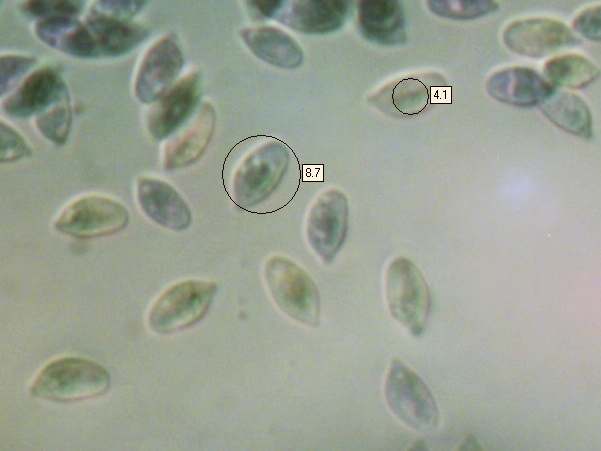Marasmius rotula (Scop.) Fr. - Collared Parachute
Phylum: Basidiomycota - Class: Agaricomycetes - Order: Agaricales - Family: Marasmiaceae
Distribution - Taxonomic History - Etymology - Identification - Culinary Notes - Reference Sources
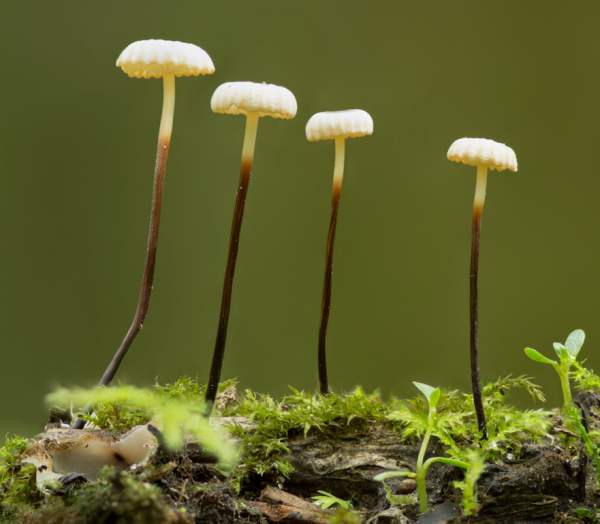
Marasmius rotula is a widespread and common little mushroom, and it is the type species of the genus Marasmius. Its widely-spaced gills are attached to a collar encircling the stem – hence the common name. Marasmius rotula is one of the most attractive of the many parachute mushrooms and quite the most distinctive. Its preferred habitat is dead deciduous hardwood roots and fallen trunks, branches and twigs – in hedgerows as well as in woodlands. Only occasionally is the Collared Parachute found on conifer wood.
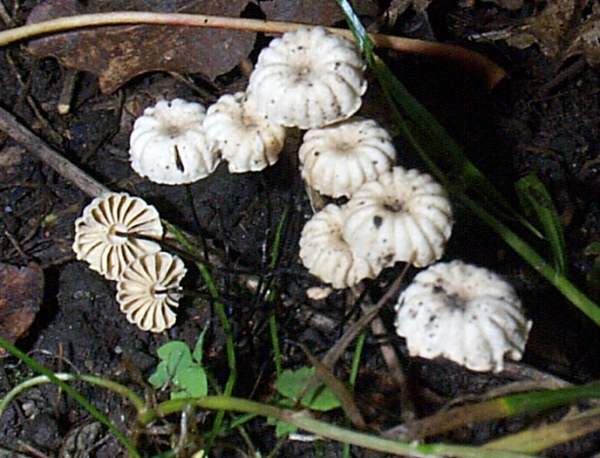
Distribution
Widespread and common in Britain and Ireland, Marasmius rotula occurs throughout mainland Europe and is found also in North America.
Taxonomic history
This mushroom was described in 1772 by Italian mycologist Giovanni Antonio Scopoli, who named it Agaricus rotula. (In the early days of fungal taxonomy, most of the gilled mushrooms were included initially in a huge genus Agaricus; later many new genera were erected into which the majority of species were transferred, so that nowadays the genus Agaricus is rather more manageable!) The Collared Parachute was redescribed by the great Swedish mycologist Elias Magnus Fries in his Systema Mycologicum of 1821. Seventeen years later, in his Epicrisis Systematis Mycologici (1838) Fries transferred this little mushroom to the Marasmius genus
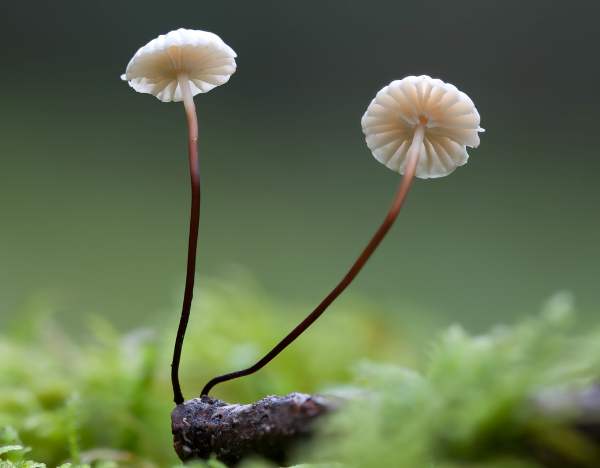
Despite its diminutive size, Marasmius rotula was selected by Fries as the type species of the Marasmius genus, which it shares some much larger agarics such as Marasmius oreades, the Fairy Ring Champignon.
Synonyms of Marasmius rotula include Agaricus rotula Scop., Merulius collariatus With., Micromphale collariatum (With.) Gray, Androsaceus rotula (Scop.) Pat., and Chamaeceras rotula (Scop.) Kuntze.
Etymology
The genus name Marasmius comes from the Greek word marasmos, meaning 'drying out'. Elias Magnus Fries, who separated the Marasmius genus from the similar white-spored Collybia fungi, used as a key differentiating factor the ability of Marasmius mushrooms to recover if rehydrated after drying out. Fries called this drought survival characteristic 'marescence'.
The reason for the specific epithet rotula becomes obvious when you turn over a cap and see that the inner collar, the gills and the outer rim of the cap look so much like the hub, spokes and rim of a wheel: ‘rot’ (as in rotula) is a reference to a wheel, as it is also in the verb ‘rotate’. In the USA this little agaric is sometimes referred to as the Pinwheel Mushroom.
Identification guide
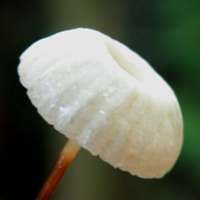 |
CapWhite or pale cream, the caps of Marasmius rotula are convex initially, flattening at maturity; radially wrinkled at the margin; 0.5 to 1.5cm across. |
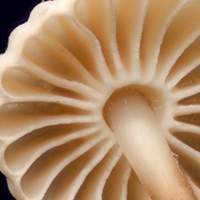 |
GillsThe gills of the Collared Parachute are pinkish-white turning ochre when old; adnate to a 'collarium' that is separated from the stem; narrow; very distant. StemThe upper stem of Marasmius rotula is concolorous with cap, but it is darker brown towards the base; shiny; 4 to 7cm long and often less than 1mm diameter; there is no stem ring. |
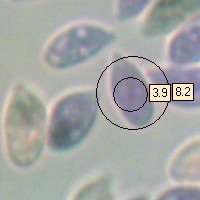 |
SporesEllipsoidal to pip-shaped, smooth, 7-9 x 3.5-4.5μm; hyaline. Spore printWhite. |
Odour/taste |
Not distinctive. |
Habitat & Ecological role |
Saprobic, on dead wood, usually from deciduous hardwood trees. |
Season |
June to November in Britain and Ireland. |
Similar species |
A similar species Gymnopus androsaceus, known as the Horsehair Parachute, has its gills attached to the stem rather than to a collar. |
Culinary Notes
The Collared Parachute mushroom is generally reported as being inedible, although why anyone would ever take on the task of collecting sufficient of these diminutive and insubstantial caps to make even a mushroom morsel never mind a meal is quite beyond comprehension.
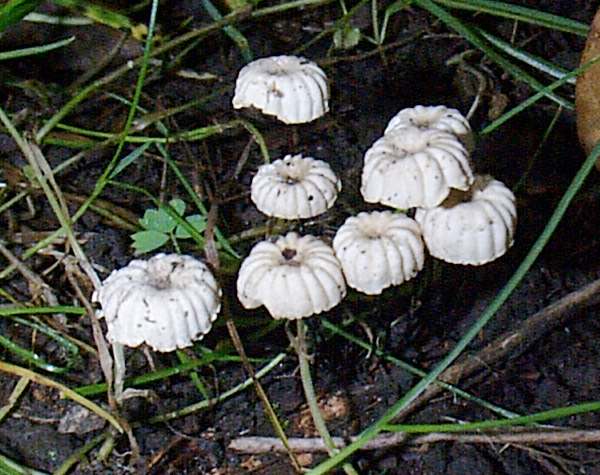
Reference Sources
Fascinated by Fungi, 2nd Edition, Pat O'Reilly 2016, reprinted by Coch-y-bonddu Books in 2022.
Dictionary of the Fungi; Paul M. Kirk, Paul F. Cannon, David W. Minter and J. A. Stalpers; CABI, 2008
Taxonomic history and synonym information on these pages is drawn from many sources but in particular from the British Mycological Society's GB Checklist of Fungi.
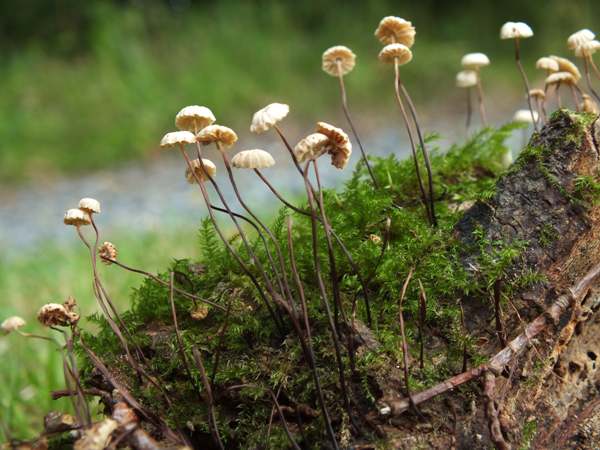
Acknowledgements
This page includes pictures kindly contributed by David Kelly.
Fascinated by Fungi. Back by popular demand, Pat O'Reilly's best-selling 450-page hardback book is available now. The latest second edition was republished with a sparkling new cover design in September 2022 by Coch-y-Bonddu Books. Full details and copies are available from the publisher's online bookshop...
